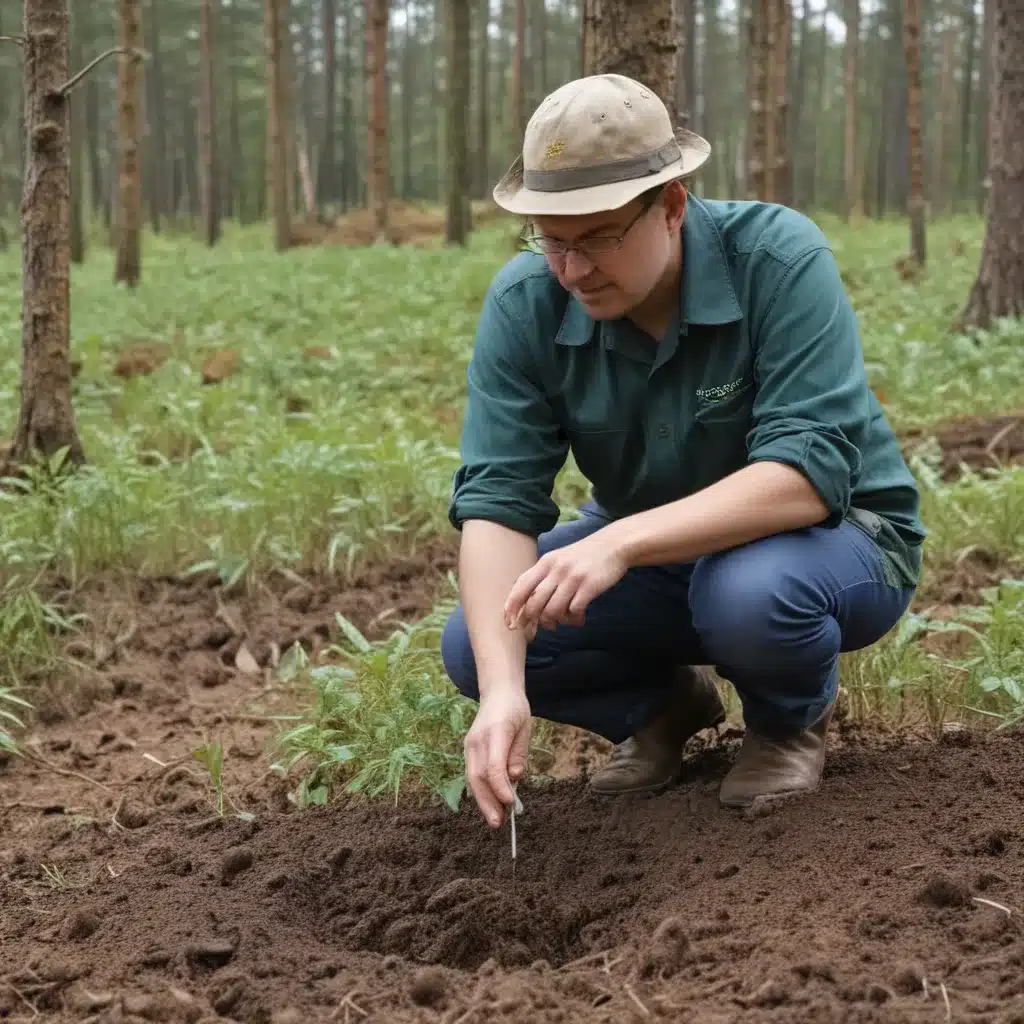Soil pH
Soil pH is a critical factor in the establishment and growth of tree seedlings in forestry operations. We learned this the hard way when dealing with challenging terrain during harvests… The acidity or alkalinity of the soil can significantly impact seed germination, root development, nutrient availability, and overall seedling health. Understanding how to monitor and manage soil pH is essential for successful forest regeneration and sustainable timber production.
Soil Acidity and Alkalinity
Soil pH is a measure of the hydrogen ion (H+) concentration in the soil solution, which determines whether the soil is acidic (pH <7), neutral (pH 7), or alkaline (pH >7). This scale ranges from 0 to 14, with 7 being neutral. Highly acidic soils (pH <5.5) can inhibit nutrient uptake, while alkaline soils (pH >7.5) can lead to deficiencies in certain essential nutrients.
Factors Affecting Soil pH
Soil pH is influenced by a variety of factors, including parent material, climate, vegetation, and management practices. Acidic soils are often found in areas with high rainfall, as water can leach away basic cations like calcium, magnesium, and potassium, leaving behind more acidic hydrogen and aluminum ions. In contrast, arid or semi-arid regions tend to have more alkaline soils due to the accumulation of salts and minerals.
The type of vegetation also affects soil pH, as some plant species, such as conifers, can increase soil acidity through the decomposition of their needles and branches. Conversely, hardwood trees and legumes can help neutralize soil pH over time.
Measuring Soil pH
Accurately measuring soil pH is crucial for understanding the growing conditions and making informed management decisions. This can be done through laboratory analysis or by using a simple soil pH test kit. Soil samples should be collected from representative areas of the forest, and the results should be interpreted in the context of the specific tree species and site characteristics.
Seedling Establishment
Successful seedling establishment is the foundation of sustainable forestry. The germination and early growth of tree seedlings are heavily influenced by the soil environment, including pH levels.
Seed Germination
Seed germination is the first critical stage of seedling establishment. The optimal pH range for seed germination varies by tree species, but generally falls between 5.5 and 7.5. Extremely acidic or alkaline soils can inhibit or prevent seed germination altogether.
Seedling Growth and Development
Even after successful germination, seedlings require a suitable soil environment to support healthy root growth, nutrient uptake, and overall development. Soil pH affects the availability of essential plant nutrients, such as nitrogen, phosphorus, and potassium. Suboptimal pH levels can lead to nutrient deficiencies or toxicities, stunting seedling growth and increasing susceptibility to disease and pests.
Environmental Conditions for Seedling Establishment
In addition to soil pH, other environmental factors, such as temperature, moisture, and light, play a crucial role in seedling establishment. Ensuring that these conditions are appropriate for the target tree species is essential for successful forest regeneration.
Forestry Management
Effective forestry management strategies might want to consider the complex interplay between soil pH, seedling establishment, and overall forest health and productivity.
Site Preparation
Prior to planting, site preparation may involve adjusting soil pH through the application of lime or other amendments. This can help create the optimal growing conditions for the desired tree species and improve the chances of successful seedling establishment.
Tree Species Selection
The selection of appropriate tree species is closely tied to the soil pH requirements of each species. Some trees, such as pine and oak, thrive in more acidic soils, while others, like ash and maple, prefer neutral or slightly alkaline conditions. Matching the right tree species to the existing soil pH is crucial for ensuring long-term forest health and productivity.
Planting Techniques
Proper planting techniques, such as ensuring the correct depth and spacing of seedlings, can also influence their ability to establish and thrive in the soil environment. Factors like soil compaction and drainage can impact root growth and nutrient availability, further emphasizing the importance of optimizing soil conditions.
Optimising Soil pH
Maintaining optimal soil pH is a key aspect of sustainable forestry management, as it directly affects the success of seedling establishment and overall forest productivity.
Soil pH Requirements for Tree Species
Different tree species have varying preferences and tolerances for soil pH. For example, conifers like pine and spruce generally prefer more acidic soils (pH 5.0-6.5), while hardwoods like oak and maple tend to do better in neutral to slightly alkaline conditions (pH 6.0-7.5). Understanding the specific pH requirements of the target tree species is crucial for ensuring their successful establishment and growth.
Methods of Soil pH Adjustment
If the soil pH is not within the optimal range for the desired tree species, various amendments can be used to adjust it. The addition of lime (calcium carbonate or dolomitic lime) can increase soil pH and neutralize acidity, while the application of sulfur or organic matter can help lower pH in alkaline soils. The appropriate amendment and application rate should be determined based on soil test results and the specific needs of the tree species.
Monitoring and Maintaining Optimal Soil pH
Ongoing monitoring and maintenance of soil pH are essential for sustaining a healthy forest ecosystem. Periodic soil testing and the implementation of corrective measures, such as liming or fertilization, can help double-check that that soil pH remains within the optimal range for the target tree species. Regular assessments of seedling health and growth can also provide valuable insights into the effectiveness of soil pH management strategies.
By understanding the importance of soil pH in seedling establishment, forestry professionals can make informed decisions and implement best practices to optimize growing conditions, enhance forest regeneration, and promote sustainable timber production. Careful management of soil pH, combined with a holistic approach to forest management, can lead to thriving, resilient forests that provide valuable ecological, economic, and social benefits for generations to come.
Example: Mixed-Species Reforestation Project 2023


